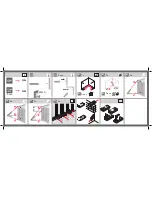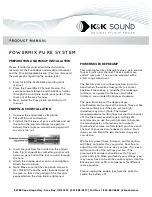
Parts
Pedals
11
Pedals
Pedal Functions
q
Sustain Pedal (Right Pedal)
This pedal performs the same function as the sustain pedal of an acoustic piano; playing notes while
keeping this pedal pressed will sustain the notes even if the keys have been released. It also provides
the Half Pedal feature, which detects and responds to the delicate control that pianists exercise on
acoustic pianos by pressing the pedal only halfway.
☞
The duration of the sustained notes differs depending on the chosen voice.
☞
The Half Pedal feature controls the sustain duration depending on how deep the pedal is pressed.
☞
Do not press the sustain pedal when turning on the piano. If the pedal had been pressed when the piano was switched
on, it may not function properly.
w
Sostenuto Pedal (Middle Pedal)
This pedal performs the same function as the sostenuto pedal, which is the middle pedal of an
acoustic grand piano. It behaves similarly to the sustain pedal, but only the notes that are being
played at the moment the sostenuto pedal is pressed will be retained. Notes that are played after the
pedal was pressed will not be affected, even if the pedal is kept pressed.
e
Soft Pedal (Left Pedal)
This pedal performs the same function as the soft pedal of an acoustic piano. Pressing this pedal
causes the sound of the piano to be muffled a little bit and softens its character.
r
Rotary Pedal (Left Pedal Alternative)
When the EFFECT of the piano is set to ROTARY (4), the left pedal is automatically set to the rotary
effect pedal. When you press the left pedal, the speed of the rotary changes rapidly. When you
release your foot, the speed becomes slower.
e
Soft/Rotaty Pedal
w
Sostenuto Pedal
q
Damper Pedal
Connecting the pedal cable
Retrieve the pedal cable tied below the pedal box, and connect it to the pedal jack below the main body.
The piano consists of three pedals that corresponds to the three pedals of an acoustic piano.
DC IN
DC IN













































